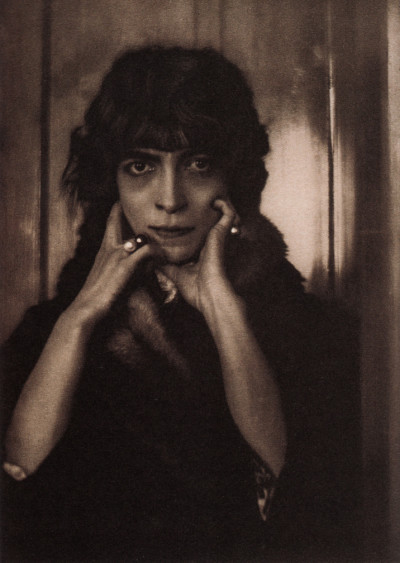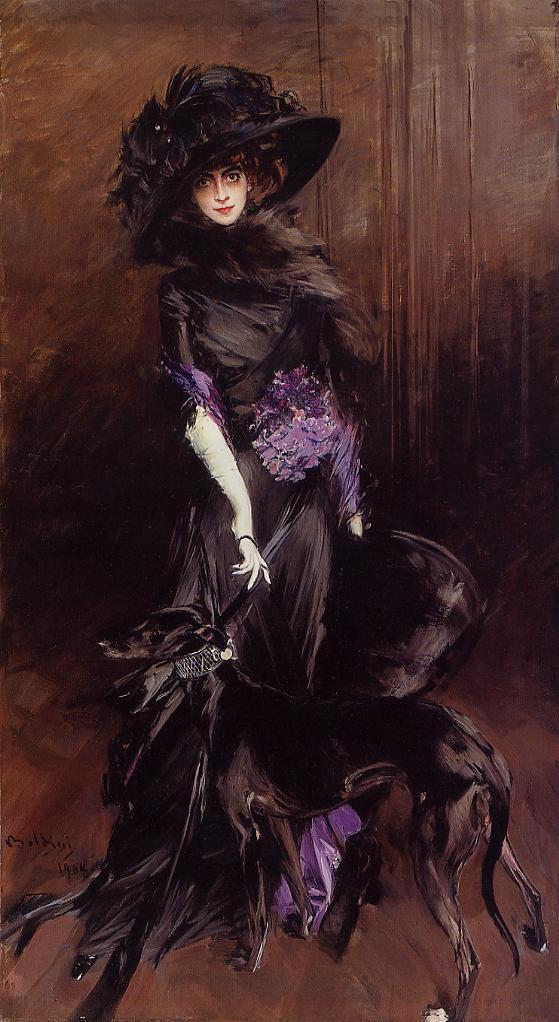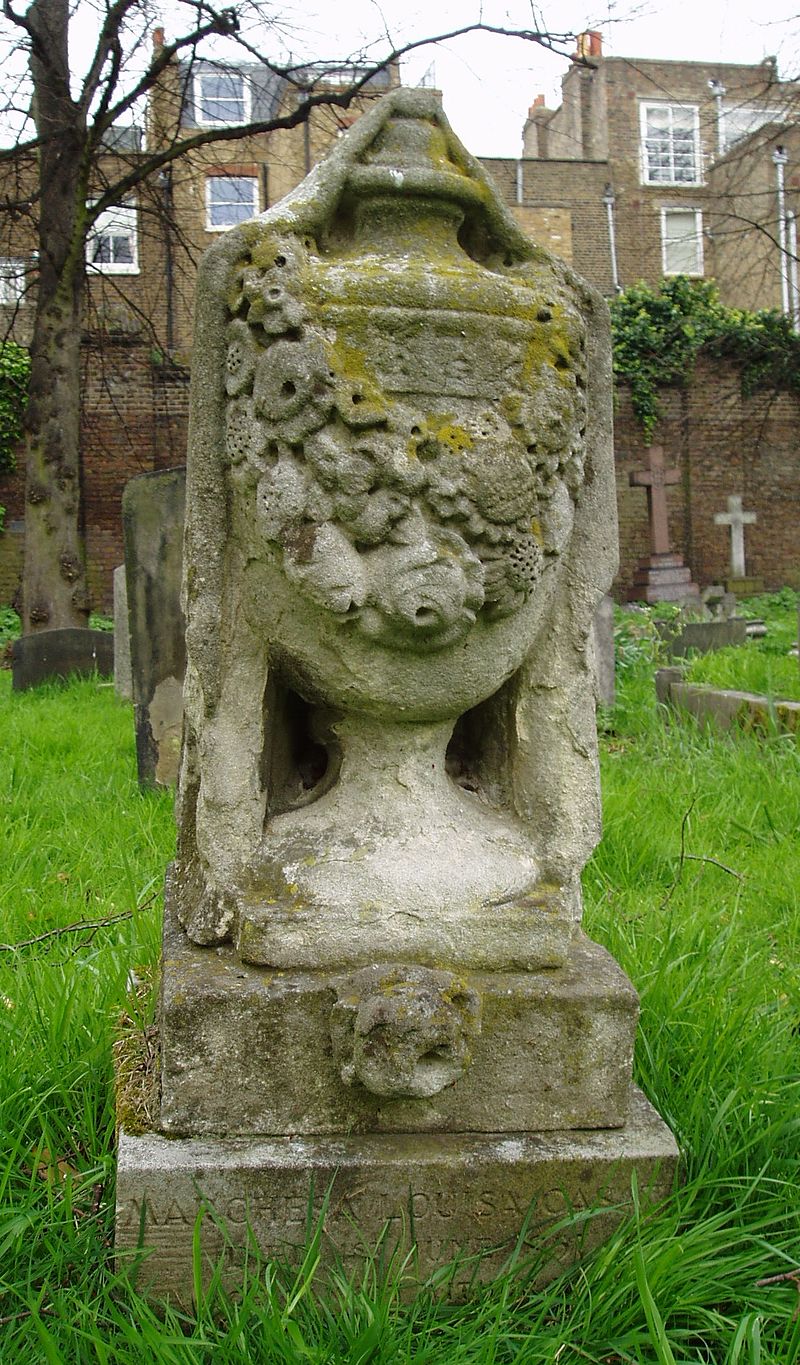Luisa Casati (Marchesa Casati Stampa di Soncino)

The younger daughter of Alberto Amman and his wife, the former Lucia Bressi, Luisa Adele Rosa Maria Amman was born in Milan to a life of luxury. Luisa’s father was of Austrian descent, while her mother was Italian and Austrian. Luisa’s father was made a count by King Umberto I. Countess Amman died when Luisa was thirteen, and Count Amman died two years later, making his daughters, Luisa and her older sister, Francesca (1880–1919, married Giulio Padulli), reportedly the wealthiest women in Italy. In 1900 Luisa married Camillo, Marchese Casati Stampa di Soncino (Muggiò, 12 August 1877 – Roma, 18 September 1946). A year later, their only child was born. The Casatis maintained separate residences for the duration of their marriage. They were legally separated in 1914, and the marriage ended upon the marchese’s death. The couple’s daughter, Cristina Casati Stampa di Soncino (1901–1953), married Francis John Clarence Westenra Plantagenet Hastings, known as Viscount Hastings and later the 16th Earl of Huntingdon, in 1925; they had one child, Lady Moorea Hastings (4 March 1928 – 21 October 2011), and divorced in 1943. The following year the Viscountess Hastings married Honourable Wogan Philipps; that marriage produced no children. Moorea Hastings was so unmaternal that, on learning she was pregnant, she arranged with her first husband that childless cousins of his would care for the baby. When Wyatt later sued for divorce on grounds of her adultery, he was, unusually, given full custody of the child.
A celebrity and femme fatale, the marchesa’s famous eccentricities dominated and delighted European society for nearly three decades. The beautiful and extravagant hostess to the Ballets Russes was something of a legend among her contemporaries. She astonished society by parading with a pair of leashed cheetahs and wearing live snakes as jewelry. She captivated artists and literary figures such as Robert de Montesquiou, Romain de Tirtoff (Erté), Jean Cocteau, and Cecil Beaton. She had a long term affair with the author Gabriele d’Annunzio, who is said to have based on her the character of Isabella Inghirami in Forse che si forse che no (Maybe yes, maybe no) (1910). The character of La Casinelle, who appeared in two novels by Michel Georges-Michel, Dans la fete de Venise (1922) and Nouvelle Riviera (1924), was also inspired by her. In 1910 Casati took up residence at the Palazzo Venier dei Leoni, on Grand Canal in Venice (now the home of the Peggy Guggenheim Collection). Her soirées there would become legendary. Casati collected a menagerie of exotic animals, and patronized fashion designers such as Fortuny and Poiret. From 1919 to 1920 she lived at Villa San Michele in Capri, the tenant of the unwilling Axel Munthe. Her time on the Italian island, tolerant home to a wide collection of artists, gay men, and lesbians in exile, was described by British author Compton Mackenzie in his diaries.
Her numerous portraits were painted and sculpted by artists as various as Giovanni Boldini, Paolo Troubetzkoy, Romaine Brooks (with whom she had an affair), Kees van Dongen, and Man Ray; many of them she paid for, as a wish to “commission her own immortality”. She was muse to Italian Futurists such as F. T. Marinetti, Fortunato Depero, and Umberto Boccioni. Augustus John’s portrait of her is one of the most popular paintings at the Art Gallery of Ontario; Jack Kerouac wrote poems about it and Robert Fulford was impressed by it as a schoolboy. Characters based on Casati were played by Vivien Leigh in La Contessa (1965) and by Ingrid Bergman in the movie A Matter of Time (1976). Much later, John Galliano based the 1998 Spring/Summer Christian Dior collection on her. Gowns from this collection have been displayed at the Metropolitan Museum of Art Fashion Institute. Perhaps Alexander McQueen most unashamedly romantic show to date, his Spring/Summer 2007 collection was inspired by Casati. Casati served as inspiration for another of Galliano’s ensembles created for his autumn/winter 2007/2008 Bal des Artistes haute couture collection for Dior. She is also the namesake of the Marchesa fashion house started by British designers Georgina Chapman and Keren Craig. And in May 2009, Karl Lagerfeld debuted his 2010 Cruise-wear collection fittingly on the Lido in Venice, for which Casati was once again a major muse.
By 1930, Casati had amassed a personal debt of $25 million. Unable to satisfy her creditors, her personal possessions were auctioned off. Rumour has it that among the bidders was Coco Chanel. Casati fled to London, where she lived in comparative poverty. She was rumoured to be seen rummaging in bins searching for feathers to decorate her hair. She died at her last residence, 32 Beaufort Gardens in Knightsbridge, on 1 June 1957, aged 76. Following a requiem mass at Brompton Oratory, the Marchesa was interred in Brompton Cemetery. The quote “Age cannot wither her, nor custom stale her infinite variety”, from Shakespeare’s Antony and Cleopatra, was inscribed on her tombstone. She was buried wearing not only her black and leopardskin finery but also a pair of false eyelashes. She shares her coffin with one of her beloved stuffed pekinese dogs. Her tombstone is a small grave marker in the shape of an urn draped in cloth with a swag of flowers to the front. The inscription strangely misspells her name as ‘Louisa’ rather than ‘Luisa’. It is a hard grave to find and, despite her fame, wealth and notoriety, is modest compared to the thousands of grand monuments surrounding it.
Born
- January, 23, 1881
- Milan, Italy
Died
- June, 01, 1957
- United Kingdom
- London, England
Cemetery
- Brompton Cemetery
- London, England
- United Kingdom



